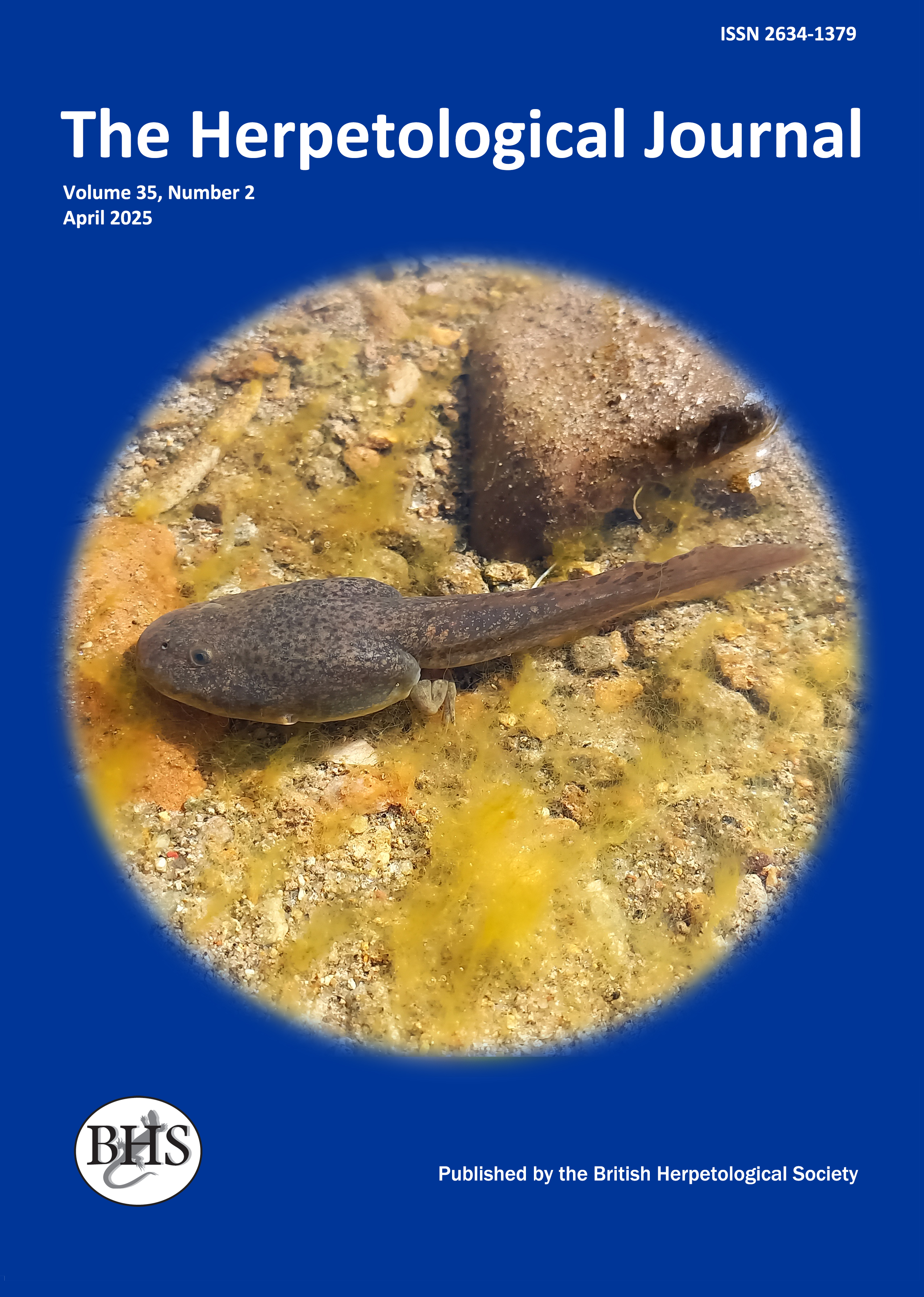
The Herpetological Journal
The Herpetological Journal is the Society's prestigious quarterly scientific journal. Articles are listed in Biological Abstracts, Current Awareness in Biological Sciences,Current Contents, Science Citation Index, and Zoological Record.
ISSN 0268-0130
2021 Impact Factor from Clarivate for the Herpetological Journal is 1.194, an increase of 0.332 from 2020.
pdf 02. Effectiveness of Amphibian Monitoring Techniques in a Taiwanese Subtropical Forest
1664 downloads
Open Access
pp. 73-79
Authors: Hsu, Min-Yi; Kam, Yeong-Choy & Fellers, Gary M.
Abstract: We compared the effectiveness of three techniques for surveying frogs in four different habitats in a subtropical area of Taiwan. We conducted surveys biweekly from July 2000 to July 2001 employing three sampling techniques (nocturnal line-transects, automated recording systems, and side-flap pail-traps) concurrently in each of four habitats (temporary pond, permanent pond, ephemeral stream, and permanent marsh). We detected 22 species of anurans from five families, representing 76% of the anuran species found in Taiwan. Line-transect sampling and automated recorders detected 22 and 20 species respectively, with an average of 12.3±3.2 (mean±SD) and 10.4±3.5 species per survey. In contrast, traps only captured 11 species, with an average of 2.1±1.5 species per survey. Automated recorders were most effective at detecting hylids, rhacophorids, and microhylids that have loud calls and/or prolonged periods of calling. Recorders were less effective at detecting ranid and bufonid species that have relatively quiet calls. Traps were good at capturing most of the ranids, species that were usually missed with automated recorders. The combination of recorders and traps was equivalent to line-transect sampling, suggesting that these two techniques are a good alternative to nocturnal line-transect sampling, a technique that is difficult to use in remote areas and/or habitats that are inaccessible at night.
Keywords: TRANSECT, SURVEY METHODS, TRAPPING, AMPHIBIAN, SAMPLING

